
德國魚貓一枚。 努力掙扎求生中。
[Matters 83] Steingraeber & Söhne Piano Museum
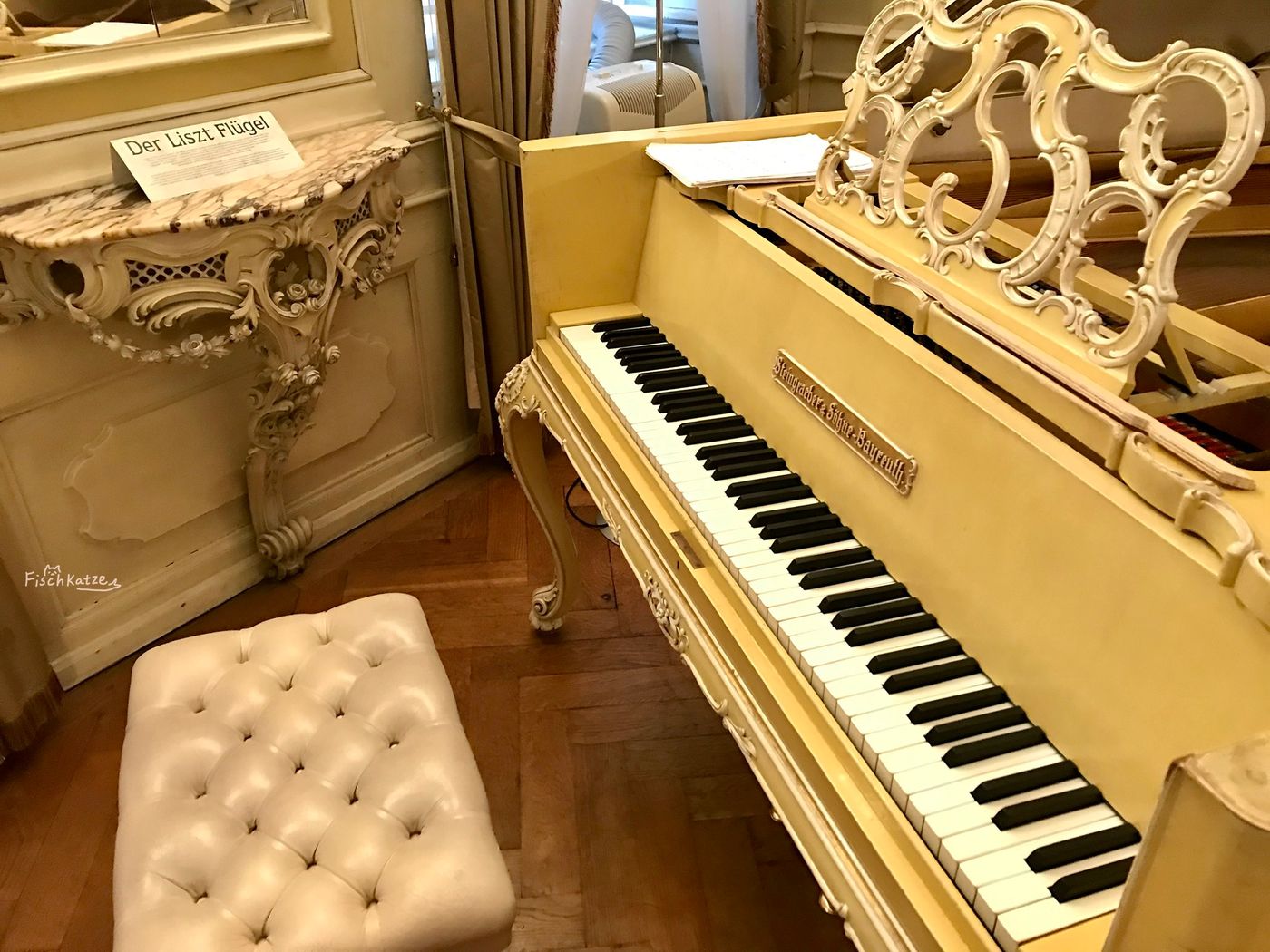
Looking back at the first time I came to this small town, I thought it was very quiet and simple, but then I gradually realized that it is actually a small "music city". In addition to the aforementioned Bayreuther Festspiele (we all call him the Wagner Festival, because it is Wagner's opera), today I want to share with you the Steingraeber & Söhne Piano Museum.
First of all, these photos were not taken recently, but before the epidemic. Since the time is a little long, some of the details in this article are partly based on previous diaries/records.
At that time, the piano museum just held several concerts (the concerts have to be paid. But there is a student price.) It also opened the museum for free tours and the boss himself guided tours. Originally, I was attracted by the performances of Chopin's pieces, and finally, by chance, I learned about it and participated in the free guided tour of the museum [because the amount of information recorded in all German results is too small], and then I went to visit the "Piano Factory" ( Here let me find another photo...) to see how to make a piano by hand.
These pianos are really almost entirely handmade and super sturdy.

In the past, in Taiwan, the most common brand of top pianos was Steinway & Sons.
But in fact, the Steingraeber & Söhne introduced today is also a very advanced piano with a cost close to tens of millions of Taiwan dollars.... Although I haven't studied the piano much, different piano sounds are like different soul essences, and the songs that can be sung or interpreted are also different. Even the same song can be like a different story. The essence should be from trees and steel wires, and the vibrating sound of the piano proves their entanglement.
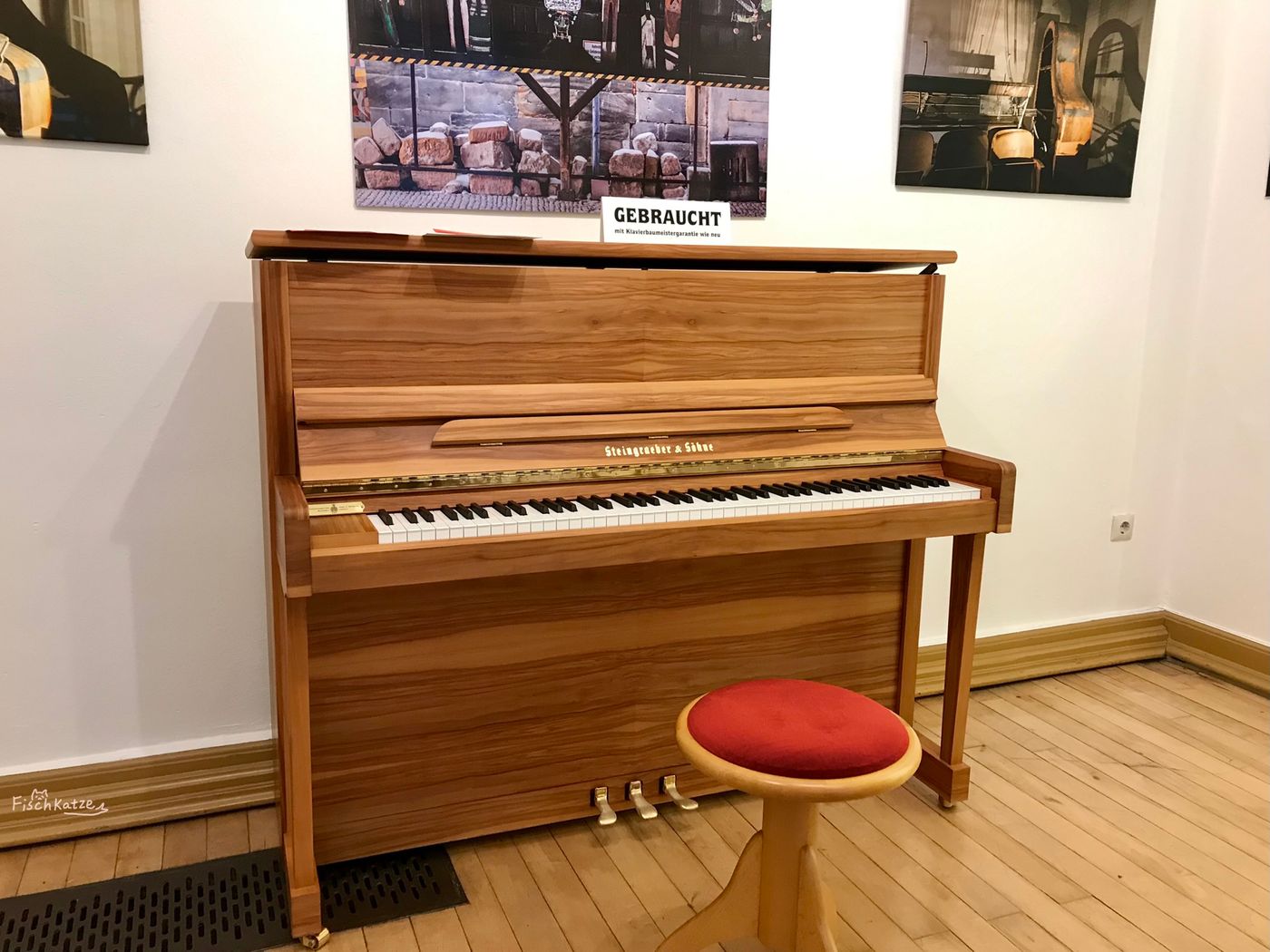
This museum has a total of two floors, and the first floor has four rooms. Different pianos are displayed on the side of the wall or in the middle of the room for display, and can be auditioned at the same time (of course, the main ones are Steingraeber & Söhne's own production. Yes, but also pianos from YAMAHA, August Förster...etc)
At that time, the tour guide on the first floor was very casual, because it was mainly for those who were interested in pianos to find their next piano. I remember that at that time, many pianos had price lists on them, most of which were second-hand pianos, and some were discounted, and they could also be paid in installments with zero interest, but more importantly, these price lists would introduce the year of manufacture, History, some of the wood used for writing, and some more professional manufacturing processes (it was too late to look at it, and there were a bunch of beautiful pianos in front of me, and my attention was not on the price list at all)

In addition to buying a piano, it is also possible to rent a piano, and it is interesting to write Mietkauf (rent to buy) instead of (die) Miete (rent).
Generally in Germany, such as renting a house, you just write the word Miete and how much you have to pay, but Mietkauf refers to paying the rent in front, renting it, but finally paying the price of the whole piano, you can buy it. very interesting.
For example, the old brand of August Förster piano (this brand has a history of 150 years) has a monthly rent of 219 euros... very amazing, because the rent in this small town is almost the same price! But after all, they are really high-quality (hochklassig) pianos, and they are also old brands. There are good ones for money.
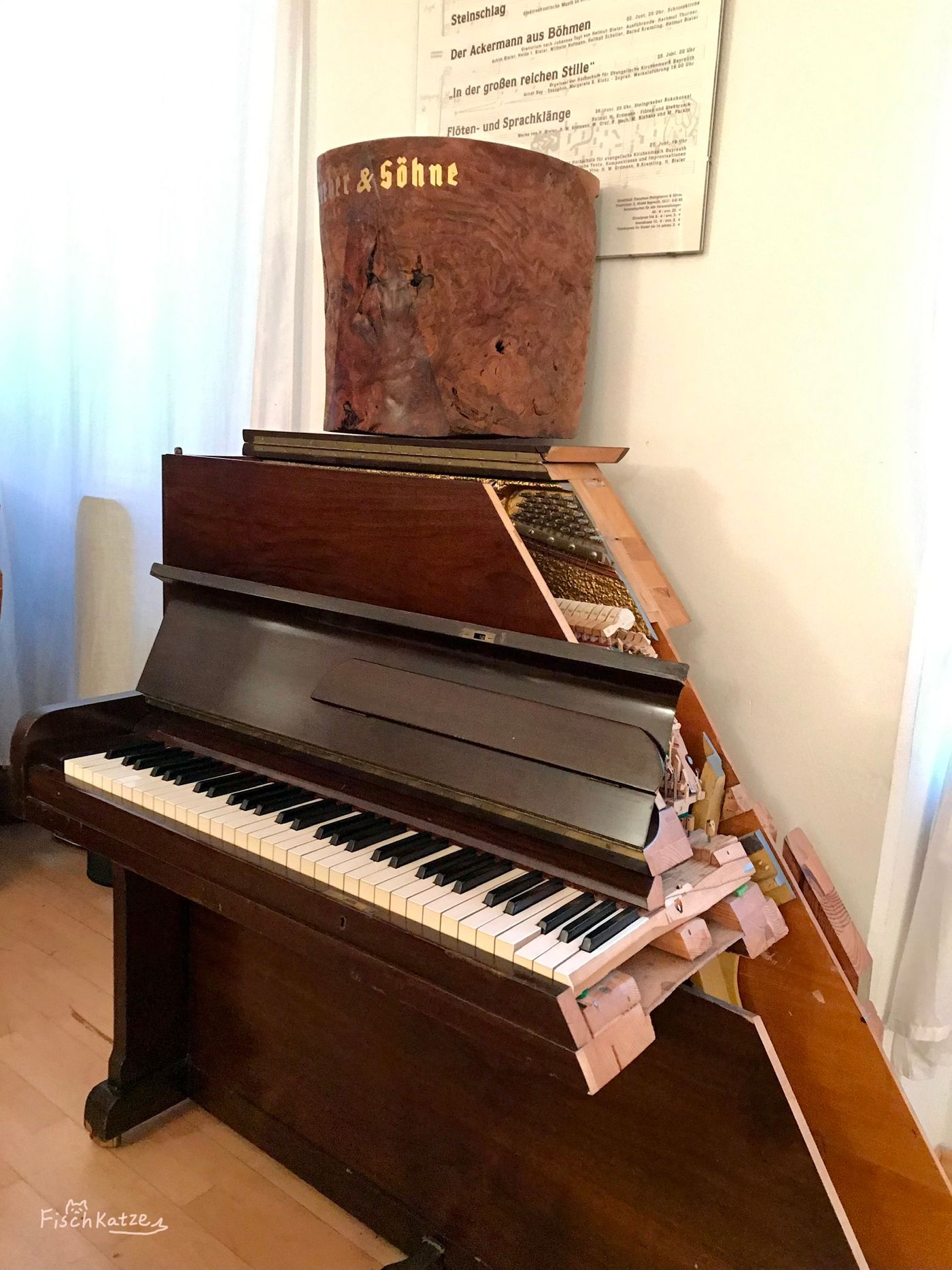
When you get to the second floor, it's really more of a guided tour.
I forgot how many rooms there are on the second floor, but it is definitely divided into three areas - the first area is like the room of European nobles, with red carpets, elegant chandeliers, wooden furniture and several wooden pianos, Then, by the middle stairs, the space for placing the Der Liszt Flügel , and the space for explaining the piano craftsmanship on the other side (as shown in the picture above, there are pianos that have been cut, as well as some frames, frames for hanging strings) etc.) but that's not the point, the point is of course the Der Liszt Flügel .
As a digression here, generally (der) Flügel means "grand piano" and (das) Klavier means "upright piano".
And since the Der Liszt Flügel is the treasure of the town hall, it was super cool that day, we were invited to sit down in the space with the Der Liszt Flügel and start listening to the owner of the piano (Because it's a family business, the owner's last name is Steingraeber!) Tell the family history of piano history.
Back then, we were the only two foreigners sandwiched between a bunch of Germans. We took it for granted, all in German! But the boss seems to have slowed down, so he has a few things in mind, such as:
- Their family has settled in the small town of Bayreuth since 1852.
- They only choose the best wood to make top pianos, including humidity, temperature, and age.
- They try to do it by hand as each piece of wood has different properties, so it is time consuming but quality is guaranteed. (Actually, this piece of information is a bit large, and I don’t remember it clearly. I used my mobile phone to memorize it while listening, but it was forgotten in my mobile phone, and I only found it today.)
In short, about the piano, although it is a musical instrument, although it is a commodity, it is actually the spirit of a professional.
Then, the boss focused on the Der Liszt Flügel, the treasure of the town hall:
- This violin was built in 1873. At that time, pianist Liszt supported Wagner (the eldest here, this small town is the fief of the Wagner family), Chopin and other composers, so he once stopped in this city.
- Between 1878 and 1882, Liszt used "this room" (yes, the space where we listened to the boss's speech), originally called the Rococo hall, as his salon, and played here.
- But because of the reconstruction, this room is not what it was left in the 1880s, but this violin was played by Liszt at a real price (the boss is a little excited about this~ I am also affected by that emotion at the moment)

The boss later talked about some parts about the frame, decoration and strings (the angles of the strings and speakers are different from today's grand pianos, but I really can't understand it, just look at the boss's comparison.) Therefore, the sound of the piano will be different.
Finally, the boss invited a piano assistant and asked him to play the tune.
At the moment I thought: Oh my god, the sound of the piano is really different, it is relatively thin, it is a bit like the sound of a normal piano combined with the sound of a harpsichord, which is inexplicably pleasant (actually, I am a little bit unaccustomed to the sound of a harpsichord).
What amazes me even more is: God, that little piano assistant is playing the tune he composed !
Because the score on the piano frame was written/drawn by him, the kind of bean sprouts drawn with a pencil, I thought it was really amazing on the spot.

The music is melodious, and the musical language is sympathetic, and it relaxes a lot at once.
When I listened to the song, I also thought that this "Azu-class" piano can still carry the power of playing, which is really amazing. (Actually I always find old pianos a little fragile.)
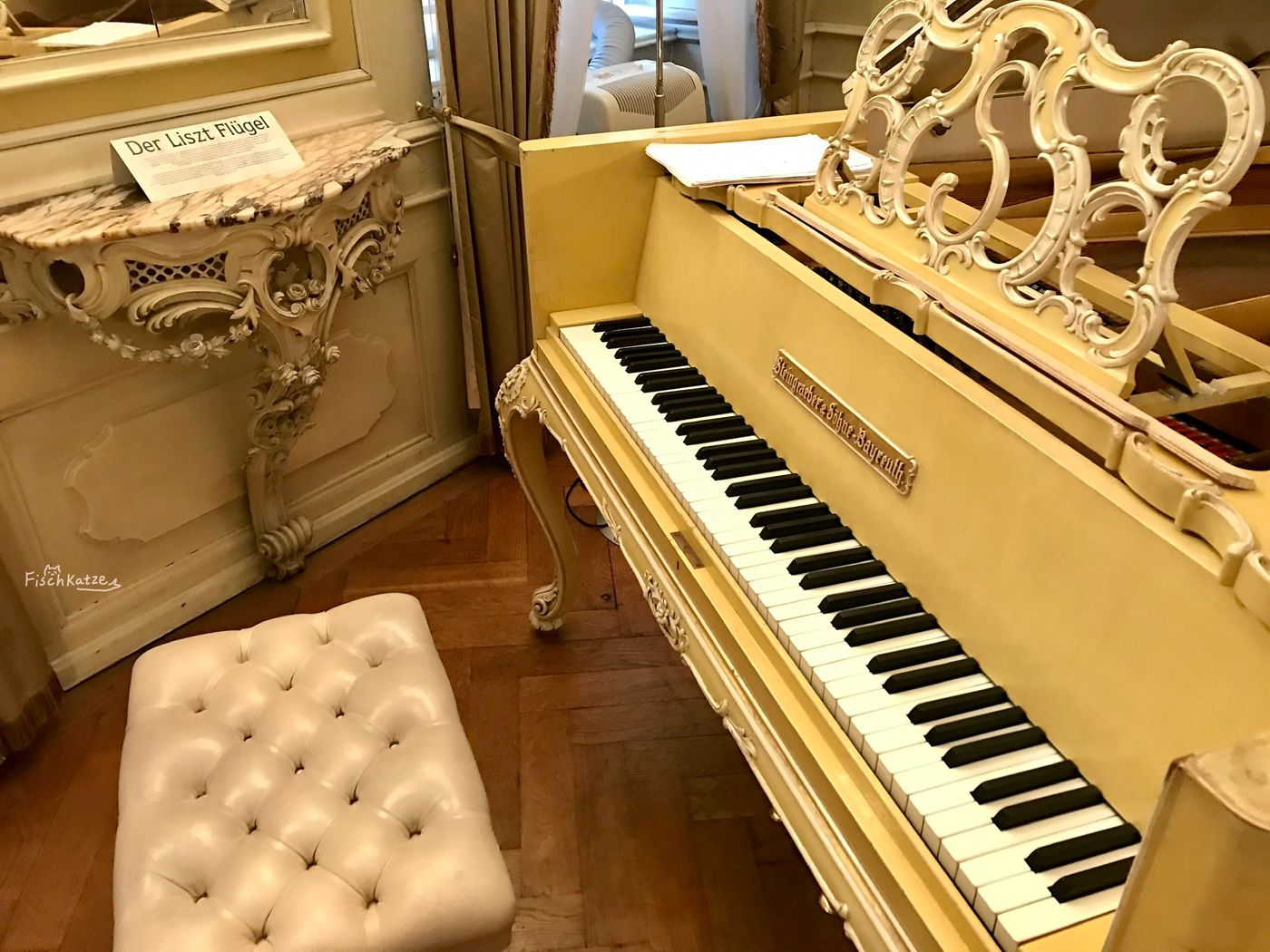
After listening to the Der Liszt Flügel singing, and listening to the singing of the next piano (also played by the piano assistant and another piece by him), everyone was taken to the next space (which is That graceful space) look at the piano and piano-like instruments.

Taking advantage of the movement of most people, as a foreigner who loves to take pictures, I rushed to take the photos above.
The lighting in the room was dim, and I was using a mobile phone, so I didn't take a good picture of Der Liszt Flügel, but that's about it.

Since this room was renovated, only the furniture and a few decorations were left as they were and were forbidden to touch. The old furniture is very fragile. This area is surrounded by ropes to avoid accidental entry, and the chair even has a red rope tied to avoid sitting by mistake!
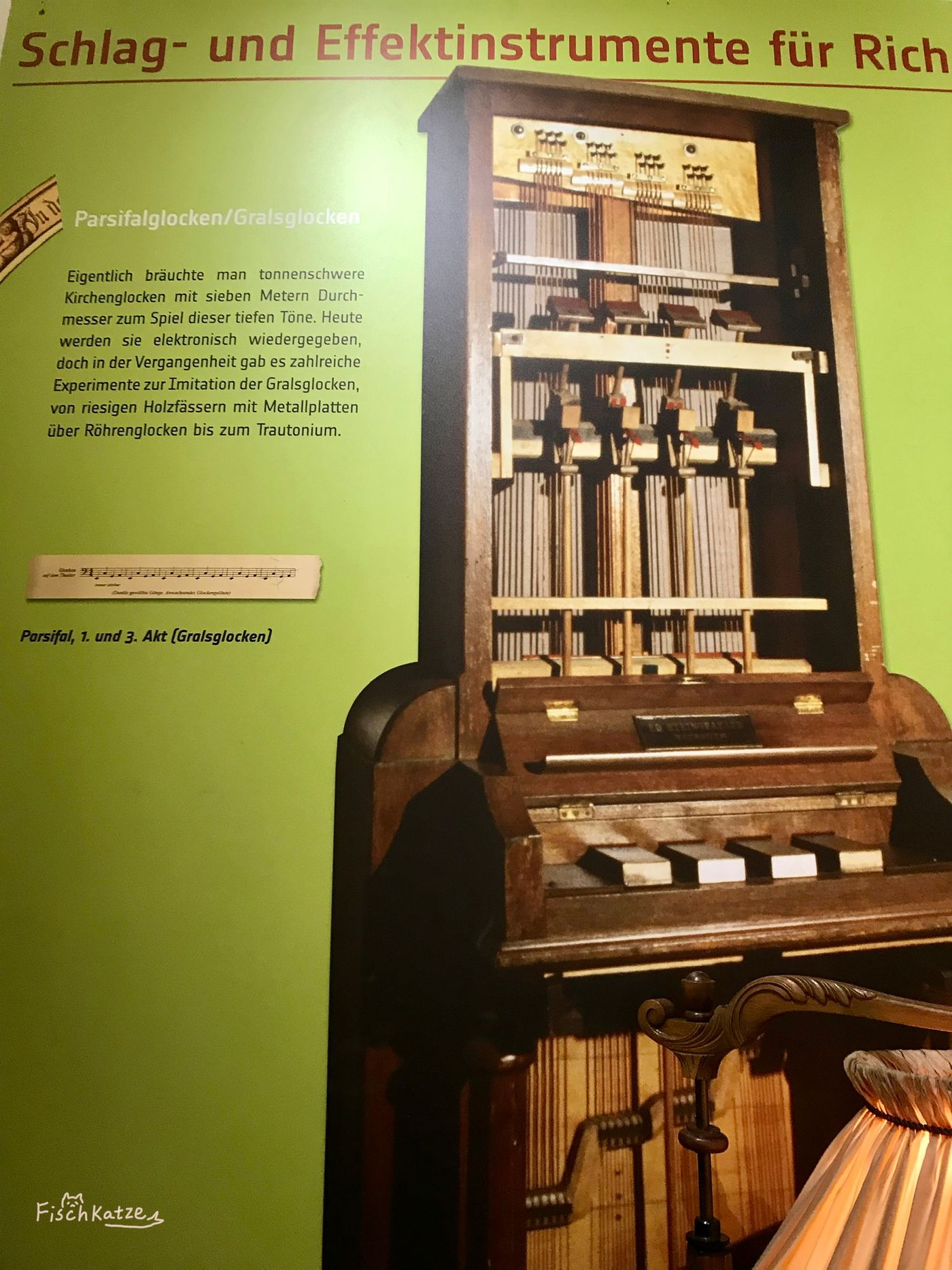
Leaving the Der Liszt Flügel space, the boss introduced a lot of antiquities while walking in the red carpet and luxurious space, but because of taking pictures, I didn't hear it before, but for the musical instrument Gralsglocken in the picture above. Impressive.
At that time, right next to this introduction, a Gralsglocken was being knocked, very loud, but a group of people couldn't take it, so I took the introduction later.
This Gralsglocken is an alternative to imitating church bells. In general, "people need to use church bells that weigh several tons and have a diameter of 7 meters to play these deep tones. Today (church bells) can be played electronically, but in the past, it was There have been many experiments imitating the Gralsglocken. From a large wooden barrel with a metal plate on a pipe bell (Röhrenglocken), to (now) it can be played electronically - this electronic instrument is the Trautonium.”
Frankly speaking, the above piece of information is still a bit vague when I look at it today, especially since Gralsglocken and Trautonium have no corresponding Chinese language, nor are they musical instruments within the scope of knowledge. I can only know that it is for the convenience of church bells.
Röhrenglocken looks like this
Trautonium looks like this
Attach a small introduction to the English version of Gralsglocken~
Looking at it again today, I found out that it was related to the playwright Richard Wagner:
In 1882 delivered to Richard Wagner an instrument with a tall, narrow case in the shape of a piano. This first set of Parsifal bells was actually a piano, a keyboard instrument with four keys. At 220 centimetres, the extraordinarily long strings were to be struck by four, 8 cm wide hammers, and the keys were 7 centimeters wide. As far back as spring 1879, Wagner asked Eduard Steingraeber if it would be possible to produce the four pitches of the ringing bells in Parsifal on a piano-like instrument with large hammers and wide keys. And he informed the piano maker that they were C, G, A, E in the lower bass register. In August 1881, Wagner gave the contract to Steingraeber.
The Parsifal bells are a classic example of Wagner's special instruments. Richard Wagner required four bells with up to twenty notes lower than c0, the strike tone of one of the Pummerin in Vienna's St. Stephen's Cathedral, which is of the lowest bells in use in the entire world, weighing over twenty tons with a diameter over three metres. To produce his contra low-E bell, Wagner would have needed over 280 tons of cast iron and a diameter of about eight metres!
(The above is from the official website)
From this point of view, Gralsglocken seems to be the evolution of the piano, which is also quite mysterious.

I listened in a daze, and at that time, whether it was taking pictures or recording the guide introduction, it was very fragmented. In fact, there are many beautiful corners in this museum, but it was too late to take pictures at that time, and it is strange to take pictures all the time. Then attach the English version of the official website here :) [It means that there are also simplified Chinese, but some pages are not translated into Chinese, so the English version is used~]
This one is a memory seal.
*
Off topic.
It was also after that time that I discovered that there was a piano practice room in this small museum.
The price for students is 5 euros per hour. It is not very cheap, but you can move your fingers a little bit. At that time, my husband suggested that we should store up value for 5 classes (30 euros 💸). As a result, entering last year, I was rushing for papers first, and then the epidemic...
Moreover, in fact, I got an electronic organ by chance last year. Later, when I wrote about the explosion, I used it to vent and practice, but I didn't want to read the score, so... inexplicably, it was a few songs improvised :)
Recently, the piano room has finally opened again, so you can go and practice the piano a little.
Today, I went to the piano room to gradually record those impromptu songs, which reminded me of the distant trip to the museum.
Recording music and writing essays can be regarded as gradually completing the little things that you want to do in life~
**
Thank you/you for reading this~
It is because of your reading that this article exists again and again :)
Like my work?
Don't forget to support or like, so I know you are with me..
Comment…